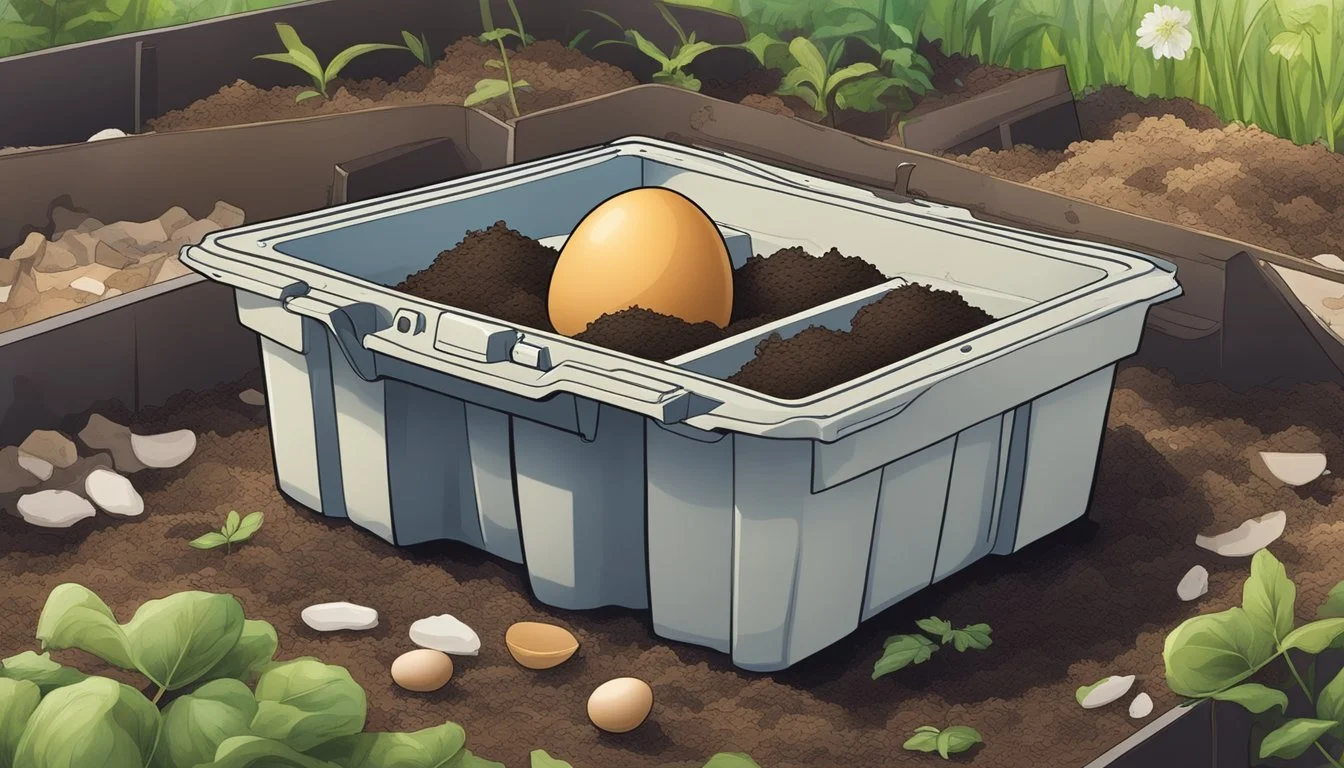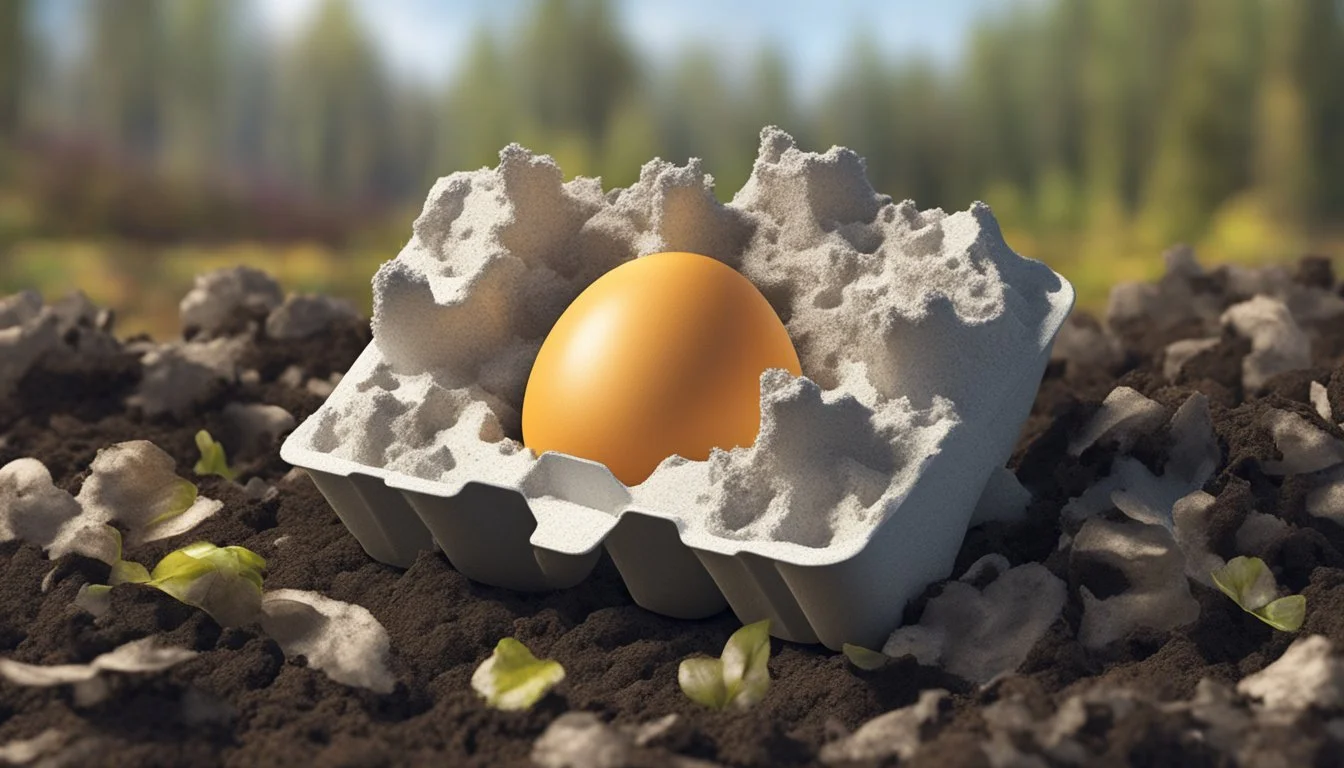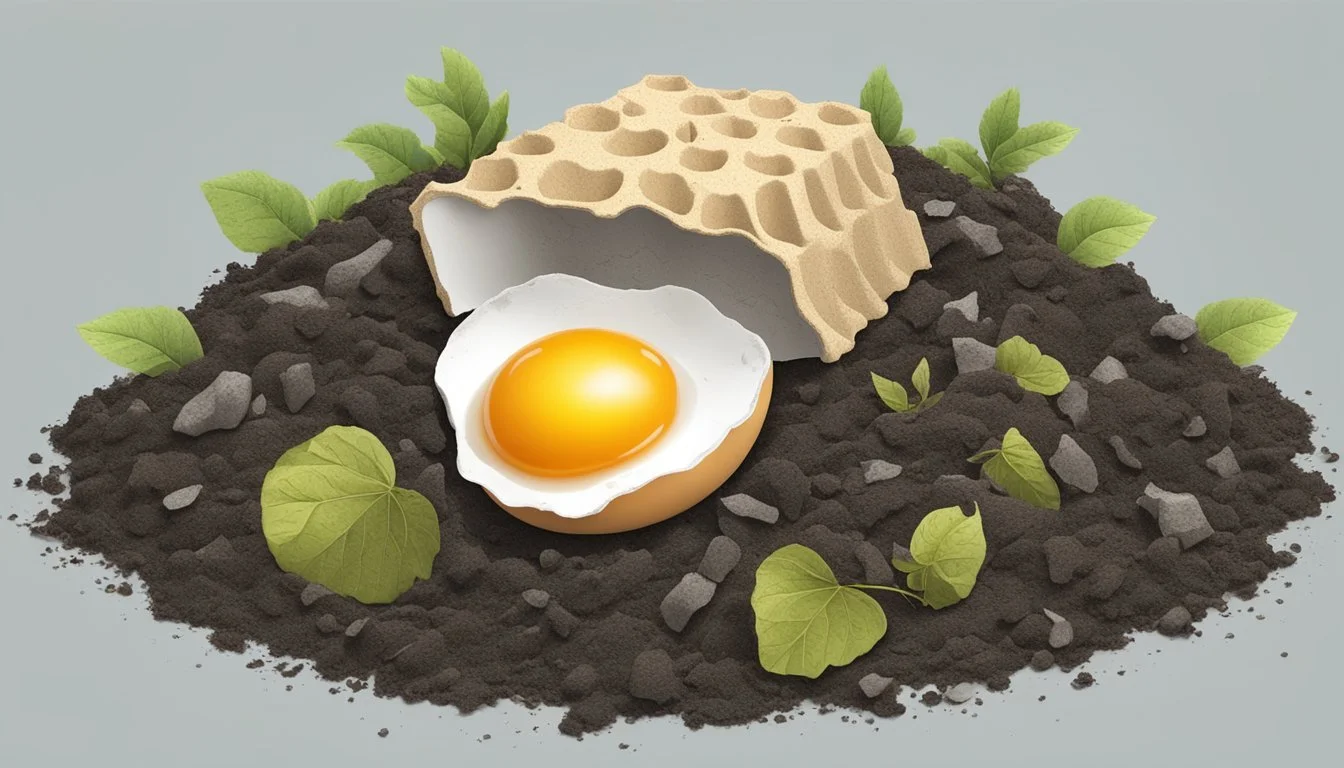Can You Compost Foam Egg Cartons
Unpacking the Truth
Composting is a practical way to recycle organic waste, such as food scraps and certain packaging, turning them into nutrient-rich soil amendment for gardens. Within this context, egg cartons often come into question regarding their compostability. Most egg cartons are made from paper materials, which are widely accepted as suitable for composting. These paper-based cartons break down over time within a compost pile, contributing to the necessary carbon-rich 'brown' materials that help to balance the compost's nitrogen content.
However, when it comes to egg cartons made of foam, typically polystyrene foam, also known by the brand name Styrofoam, the situation differs. Foam egg cartons are not considered compostable because polystyrene does not break down naturally in a compost system. Moreover, foam products can persist in the environment for a very long time, potentially releasing chemicals into the soil and negatively affecting the quality of the resulting compost.
Therefore, it is important for individuals who are composting to distinguish between paper and foam egg cartons. While the former can be beneficial for compost, the latter should be excluded from the compost pile and instead be disposed of according to local recycling guidelines, if available. It is through such careful sorting and disposal that composters can ensure the health of their compost and contribute positively to environmental sustainability.
Understanding Egg Cartons
Egg cartons are essential for protecting eggs during transport and storage, but their material composition varies. This section delves into the materials used, the different types available, and the significance of labels and printing methods used on these cartons.
Material Composition
Egg cartons are commonly made from three primary materials:
Paperboard/Cardboard: Constructed from wood pulp or recycled paper, these are biodegradable and frequently used for egg cartons.
Plastic: Typically manufactured using clear or colored plastic, allowing visibility of the eggs but less environmentally friendly.
Styrofoam (Polystyrene Foam): Offers excellent cushioning for eggs but is non-biodegradable and environmentally problematic.
Types of Egg Cartons
There are three prevalent types of egg cartons based on their material:
Paper Egg Cartons: Often made from molded paper pulp, they are favored for their biodegradability and compostability.
Plastic Egg Cartons: More durable than paper, these can be either recycled or reused but may not be compostable depending on the type of plastic.
Styrofoam Egg Cartons: Praised for their protective qualities but widely criticized for their environmental impact as they are not biodegradable or easily recyclable.
Labels and Printing on Cartons
Labeling on egg cartons serves to provide important information to the consumer. In terms of printing, the inks used vary depending on the carton material. Typically, cartons may feature:
Brand logos: Bold or stylized text and imagery, often in multiple colors.
Egg grade and size: Descriptive text, usually printed directly on the carton.
Use-by or sell-by dates: Critical for ensuring freshness, these are either printed or stamped on the carton.
The ink used should be non-toxic, especially for paper egg cartons that might be composted, to prevent contamination of the compost soil. Plastic and Styrofoam cartons often use labels that are affixed to the surface, which may need to be removed if the carton is to be recycled.
Principles of Composting
Composting is a natural process that transforms organic waste materials into nutrient-rich soil conditioner through the efforts of microorganisms. Excellent composting practices can convert a variety of organic substances, including specific types of egg cartons, into beneficial compost.
Composting Process
Composting involves the breakdown of organic matter into simpler compounds, a process facilitated by microorganisms like bacteria and fungi. Aeration is vital, as it supplies oxygen needed for aerobic decomposition. The process generates heat, which accelerates decomposition and eradicates harmful pathogens. Regular turning of the compost pile can maintain consistent temperature and oxygen flow.
Materials in Composting
For effective composting, a balance of carbon-rich "brown" materials and nitrogen-rich "green" materials is crucial. Examples of brown materials include dry leaves, paper-based egg cartons, and straw, which contribute carbon. Green materials provide nitrogen and include grass clippings, food scraps, and coffee grounds.
Green Materials (Nitrogen-rich):
Grass clippings
Food scraps
Coffee grounds
Brown Materials (Carbon-rich):
Leaves
Paper-based egg cartons (Shredded)
Cardboard
The balance between these two types of materials is often referred to as the carbon-to-nitrogen ratio (C ratio).
Composting Environment
An effective composting environment needs to be moist (but not saturated) to support microbial activity which is essential to the decomposition process. The addition of water to dry materials might be necessary to achieve this moisture level. Furthermore, the compost bin or pile should be situated in a location that supports regulation of temperature and protects from overexposure to the elements, ensuring that microorganisms remain active and efficient. Worms can also be introduced to the compost to break down the material and enhance the production of nutrients for the soil.
The Compostability of Egg Cartons
When considering the compostability of egg cartons, it is important to differentiate between the materials they are made from. Paper and cardboard varieties generally decompose well, while foam cartons pose challenges in composting processes.
Paper and Cardboard Egg Cartons
Paper and cardboard egg cartons are widely accepted in compost heaps due to their biodegradable nature. These materials, often comprised of wood pulp or recycled paper, contribute to the 'brown' component of compost, providing essential carbon to the composting mix. To compost these effectively:
Shred or tear the cartons into small pieces to expedite decomposition.
Maintain a balance between 'green' (nitrogen-rich) and 'brown' (carbon-rich) materials.
Ensure there is adequate moisture to facilitate the breakdown of fibers.
Foam Egg Cartons
Foam egg cartons, typically made from polystyrene, are not suitable for composting. Polystyrene is a type of plastic that does not biodegrade and can release harmful chemicals into the environment. Consequently, foam egg cartons should be kept out of the compost bin to avoid contaminating the resultant compost.
Biodegradable and Compostable Cartons
Biodegradable egg cartons are specifically designed to break down under certain conditions, and these are often marketed as compostable as well. When adding biodegradable cartons to compost:
Check for certification marks that indicate compostability.
Follow the manufacturer’s guidance for composting, if provided.
It's essential to distinguish between home composting and industrial composting, as some products labeled 'compostable' may require the higher temperatures of an industrial facility to decompose.
How to Compost Egg Cartons
Composting egg cartons is a sustainable way to reduce waste and add carbon-rich material to your compost pile. They are considered brown materials that help balance the nitrogen-rich greens like kitchen scraps and grass clippings.
Preparation of Cartons
Before adding egg cartons to a compost pile, one must ensure they are made of paperboard or paper pulp, not foam. Paper-based egg cartons should be shredded or torn into small pieces to increase the surface area and hasten decomposition. Any attached food residue should be removed to prevent pests.
Mixing with Other Compostable Materials
When adding shredded egg cartons to a compost bin, they should be evenly mixed with nitrogen-rich materials often referred to as greens. This includes kitchen scraps, grass clippings, and leaves. To maintain a balanced compost pile, one must ensure there is a mix of these greens and brown materials like egg cartons, sawdust, or dry leaves. This balance assists in retaining optimal moisture levels and provides oxygen circulation, both critical for effective composting.
Monitoring the Composting Progress
Regular monitoring is key to successful composting of egg cartons. One should check for adequate moisture, turning the compost pile regularly to aerate it and ensure even decomposition. The compost should be kept damp but not waterlogged to avoid anaerobic conditions. Oxygen flow is important to keep the process aerobic, which speeds up decomposition and prevents bad odors. If the pile becomes too wet, more brown materials can be added to absorb excess moisture.
Environmental Impact of Egg Cartons
The environmental impact of egg cartons is multifaceted, with implications for waste reduction, landfill management, and sustainable practices. Comprehensive understanding of these factors is crucial for making informed decisions regarding their disposal and recycling.
Reduction of Waste
Egg cartons, especially those made of foam, are not traditionally compostable, and their persistence in the environment can contribute significantly to waste volumes. Recycling foam cartons is one method to reduce waste, as they can be repurposed into new products, thus lessening the demand for virgin materials. However, not all regions have facilities equipped to recycle this type of material, reinforcing the importance of considering alternatives that minimize environmental impact.
Egg Cartons and Landfill Issues
Egg cartons constructed from foam are a common sight in landfills, where they can take an extended period to decompose, if at all. They occupy valuable space and can release harmful substances as they break down. Their presence in landfills exacerbates the landfill waste problem and highlights the necessity for more sustainable packaging solutions that can decrease the volume of non-biodegradable waste.
Sustainable Practices and Composting
Paper and cardboard egg cartons present a more environmentally friendly option due to their compostable nature. They can break down in commercial composting facilities or personal compost piles, eventually contributing to nutrient-rich soil. This sustainable practice supports soil health and offers notable environmental benefits like reducing the carbon footprint associated with landfill usage. For foam cartons, which are not compostable, the adoption of alternative sustainable practices is critical for sustainability and for reducing waste effectively.
Repurposing and Alternative Uses for Egg Cartons
Egg cartons, especially those not suited for composting such as foam-based ones, can find new life through various creative and industrial repurposing avenues.
Creative Reuses
Seed Starters: Individuals can utilize the compartments in egg cartons as seed starters. The small pockets are ideal for holding soil and nurturing the early growth of plants before they are transplanted into a garden.
Organizer: They can serve as organizers for small items such as screws, beads, or jewelry, eliminating the clutter in workspaces and craft rooms.
Fire Starters: Saturating cartons with wax and integrating flammable materials like dryer lint can transform them into handy fire starters for camping or wood stoves.
Commercial and Industrial Applications
Packaging Materials: Industrially, repurposed egg cartons can be used as packaging buffers for shipping delicate items, taking advantage of their compartmental design to minimize damage during transit.
Soundproofing: The unique shape and material of foam egg cartons can be applied in soundproofing projects, with the cartons being fixed to walls to reduce noise levels in spaces like home studios or garages.
It is essential to note that while creative reuses abound, foam egg cartons should be kept out of the compost pile, as they contain toxins that may leach heavy metals into the soil, disrupting the composting process and potentially harming the environment.
Regulations and Standards for Composting
In the realm of composting, there exist specific standards and regulations aimed at ensuring both environmental safety and process efficiency. These rules help to distinguish between truly compostable materials and those that may hinder or contaminate the composting process.
Composting Standards and Certifications
Composting standards dictate the parameters for what materials can be labeled as compostable. They must be able to biodegrade into carbon dioxide, water, and biomass at a rate similar to paper and without leaving any toxic residue. Certifications such as the BPI Certification in the US, based on American Society for Testing and Materials (ASTM) standards, ensure that products marketed as compostable will not introduce heavy metals or other toxins into the compost heap.
Compostable egg cartons are often made from paper, cardboard, or PLA plastic (a plant-based material) which meets these certifications and are deemed suitable for compost bins.
Challenges with Non-Compostable Materials
Non-compostable materials, like those made from petroleum-based foam, pose significant challenges:
They do not decompose in a standard compost bin and can take hundreds of years to break down in landfills.
Foam egg cartons can release heavy metals and additives that become toxins in the soil.
The presence of non-biodegradable foam in compost piles reduces the efficiency of composting and can lead to more landfill waste.
Materials that do not meet composting standards should not be placed in compost bins, as they can lead to contamination and reduced quality of the resulting compost.
Frequently Asked Questions about Composting Egg Cartons
When it comes to composting egg cartons, one must understand the materials involved and their respective impacts on the composting process.
General Composting Concerns
In the context of composting, paper egg cartons are considered an excellent source of carbon and can absorb excess moisture, facilitating proper decomposition within a compost pile or compost bin. These cartons typically decompose well, becoming part of the nutrient-rich compost over time.
Specific Egg Carton Queries
Concerning foam egg cartons, often made of styrofoam or polystyrene, they are not compostable due to their inability to break down naturally in a compost environment. This type of material can persist for a very long time without decomposition. Additionally, plastic egg cartons also do not belong in compost due to their non-biodegradable nature. It's essential to keep non-compostable materials like foam, oil-based substances, and most plastics out of the compost to maintain the purity and quality of the resulting compost.









